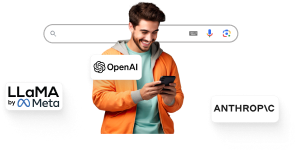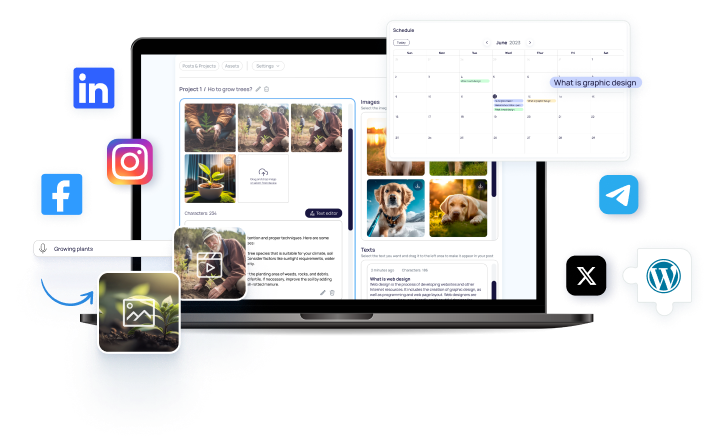The Rise of AI in Video Meetings: Transformations and Implications

If you're in a job that frequently involves platforms like Zoom, particularly at a company keen on testing new software features, you may have received updates about enhancements in meetings. For instance, Microsoft Teams users might have notifications about AI-generated meeting recaps, while Google Workspace users could be prompted to use chatbots for note-taking. If your calendar is packed with overlapping Zoom calls, you may have encountered features called "AI Companion, " providing summarized transcripts, chat interfaces for updates, and automatic video highlights. Although you may not have used these features yet, they are becoming widespread due to advancements in AI technology, particularly large language models (LLMs), which make transcription and summarization easier and more affordable. These innovations exist primarily because it's now feasible to implement them. Automatic transcription, often fueled by OpenAI, is improving rapidly, prompting companies like Zoom and Microsoft to adopt them with the perspective of "Why not?" The appeal is clear: what if you didn’t have to take notes during meetings, could review missed ones effortlessly, or check what was said afterward?However, these tools serve more than as simple upgrades; they transform meetings into searchable and shareable content. This transformation can be amusing or disheartening, revealing meetings that might have been unnecessary in the first place. While searching through transcripts can be exceedingly useful, there's concern that these features could create the illusion that meetings are the foundation of work, overshadowing employees’ actual tasks. Additionally, the shift towards treating meetings as content opens doors for new metrics. As companies like Microsoft and Google proceed cautiously regarding meeting quantification, startups are capitalizing on this trend.
For example, Read. ai, an AI tool for meeting analysis, offers a live dashboard during meetings that tracks participation and engagement. This includes metrics of individual performance, like speaking time and the use of filler words. Other startups share similar goals, creating platforms that assess meeting performance or monitor inclusivity. Initially, such metrics may appear intriguing but not particularly practical for participants. However, they can be useful for evaluating involvement and engagement. These dashboards bear resemblance to traffic-tracking services used in online publishing and the adrenaline rush of live streaming, where performance statistics fluctuate in real-time. While contemplating the implications of metric-driven meetings, it’s essential to recognize these tools cater primarily to corporate interests, allowing management to quantify participation and attention levels. They provide insights into how meetings unfold and assess individual performance, effectively functioning as a form of surveillance rather than mere organizational aids. The evolution of video meetings hints at a future where AI increasingly permeates the office, akin to its role in factories and call centers in the past. Employees will benefit from smart assistants for note-taking and information management, yet those assistants also report to management, tracking performance and guiding behaviors according to preset objectives. In this AI-driven workplace, everyone might have a robotic intern, but the catch is that this intern is also your supervisor.
Brief news summary
The landscape of remote work is transforming due to advancements in AI on platforms like Microsoft Teams and Zoom. These innovations improve productivity with features such as AI-generated meeting summaries, tools to revisit missed discussions, and performance tracking. Affordable AI solutions, like OpenAI's API, alleviate the burden of note-taking and enhance engagement, converting meetings into searchable data that documents productivity. However, this trend may lead to misconceptions about the critical role of meetings, portraying them as more essential than they are. Companies are increasingly using metrics-based tools to monitor engagement and performance in real-time, similar to streaming services. While these tools enhance convenience, they may prioritize management oversight over employee autonomy, creating a paradox. Instruments meant to boost productivity can also act as means of performance surveillance, complicating workplace dynamics and altering the balance between oversight and trust.
AI-powered Lead Generation in Social Media
and Search Engines
Let AI take control and automatically generate leads for you!

I'm your Content Manager, ready to handle your first test assignment
Learn how AI can help your business.
Let’s talk!
Hot news

Apple's AI Executive Joins Meta's Superintelligen…
Ruoming Pang, a senior executive at Apple who heads the company’s artificial intelligence foundation models team, is departing the tech giant to join Meta Platforms, according to Bloomberg News reports.

Ripple Applies for U.S. Banking License Amidst Cr…
Ripple has recently submitted an application for a Federal Reserve master account through its newly acquired trust company, Standard Custody.

AI in Autonomous Vehicles: Overcoming Safety Chal…
Engineers and developers are intensively working to resolve safety issues related to AI-driven autonomous vehicles, especially in response to recent incidents that have sparked widespread debate on the reliability and security of this evolving technology.

SAP Integrates Blockchain for ESG Reporting in ER…
SAP, a global leader in enterprise software, has announced a crucial enhancement to its enterprise resource planning (ERP) systems by integrating blockchain-based Environmental, Social, and Governance (ESG) reporting tools.

Middle Managers Diminish as AI Adoption Increases
As artificial intelligence (AI) rapidly advances, its influence on organizational structures—especially middle management—is becoming increasingly clear.

The Blockchain Group Bolsters Bitcoin Reserves Wi…
The Blockchain Group Strengthens Bitcoin Holdings Through $12

Kinexys Launches Carbon Market Blockchain Tokeniz…
Kinexys by J.P. Morgan, the firm’s leading blockchain business unit, is developing an innovative blockchain application on Kinexys Digital Assets, its multi-asset tokenization platform, aimed at tokenizing global carbon credits at the registry level.

 Auto-Filling SEO Website as a Gift
Auto-Filling SEO Website as a Gift








 Auto-Filling SEO Website as a Gift
Auto-Filling SEO Website as a Gift

